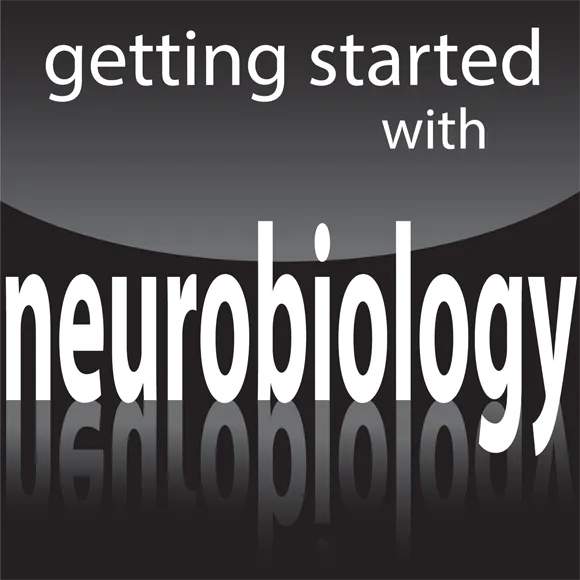In This Chapter
Getting to know the neuron
Finding out how the nervous system is organized
Feeling cerebral with thoughts, learning, and memory
Seeing the effects of mental illness and developmental problems
What makes you you? Your brain, most people would answer. Then what is it about your brain that makes you you? The brain is made of neurons. Worms have brains with neurons. So do dogs and monkeys. What about the brain distinguishes these animals from each other, and for that matter, one human from another? Is it more neurons, different neurons, special neural circuits?
Neurobiologists would like to answer all these questions, but they can’t yet. Thousands of them at universities all over the world are working on these problems. They have many hypotheses and data sets. This book, in a way, is a progress report on their efforts.
Virtually all neurobiologists believe that intelligence comes from nervous systems that are broadly programmed by genes and fine-tuned by experience. Generally, the human genetic program creates a brain with more neurons than any other animal, allowing for richer experience to produce a unique kind of intelligence.
This chapter gives an overview of the brain, its functions, and its parts. It also looks at why humans are like many other animals, such as primates, because of similarities in our brains, and what differences in the human brain may distinguish us from other species, and from each other.
Introducing Neurons
Neurobiology is the study of neurons and nervous systems, such as brains. Neurons are cells. Like other cells, neurons interact with the external world and other cells through specialized receptors in their membranes and through biochemical processes inside their cytoplasm and nucleus.
Neural capabilities evolved from those of single-celled organisms, like bacteria and paramecia, which use membrane sensors to detect food and toxins, and cilia to move toward food and away from toxins. Single-cell organisms may also change their internal metabolism upon ingesting particular substances from the environment.
Multicellular organisms consist of different types of cells that are specialized to do things like secrete hormones or digestive enzymes. They depend on other cells for nutrients, waste removal, and the maintenance of a supportive environment. Neurons are specialized cells in multicellular organisms that, among other things, enable rapid communication across the large distances from one end of an animal to another. This allows the animals to perform coordinated movements and to act upon sensing the surrounding environment.
Evolving cells on early earth
According to astronomers and astrophysicists, the universe as we know it came into existence about 14 billion years ago. After several cycles of star formation, our solar system, including the earth, formed about 4.5 billion years ago. The earth was too hot for life for about a billion years, as it continued to be bombarded by the solar system debris from which it was formed.
Eventually most of the solar system debris stuck to one or another planet, or stabilized in relevantly permanent orbits such as the asteroid belt between Mars and Jupiter. Earth cooled for about 1 billion years, and life arose. No one knows how. Some scientists are suspicious that life arose almost as soon as the earth was cool enough, suggesting either that it must occur almost automatically given the right conditions, or it came from elsewhere and established a foothold as soon as it was possible.
Looking at the origin of single cells
The living things that arose at the 1-billion-year mark were single-celled prokaryote cells that lack a nucleus, such as bacteria we have today. Life stayed unicellular for a long time after that. This doesn’t mean that no progress was made, though. Undoubtedly the single cells that existed at the time of evolution to multicellularity were more sophisticated and diverse than those that could be found when life originated.
Catalyzing reactions in the primordial soup
All life forms carry out metabolism, using energy to build proteins and other cell constituents. The proteins in all cells are coded for by the same DNA coding scheme (see Chapter 2), one piece of evidence that argues for a common origin of all life. A particularly important type of protein that all cells make is an enzyme. Enzymes cause specific reactions such as cleaving proteins at a particular place or joining proteins to other molecules.
Many of the DNA sequences, proteins, and reactions that exist in multicellular organisms are similar to those in single-celled organisms. This apparent conservation of biochemistry is an important argument for life having a common origin.
Separating inside from out: Membranes
A fundamental property of cells is that they have membranes that separate their insides from the external environment. What makes a cell what it is and does relies significantly on the receptors it has in its membrane and how they respond to external substances and energy inputs.
Cellular responses to substances that bind membrane receptors include biochemical cascades inside the cell, and, in neurons particularly, electrical activity. A significant percentage of all animal genes code for proteins that compose hundreds of different types of membrane receptors.
Comparing eukaryotes to prokaryotes
About 1 to 2 billion years after single-cell life arose, some single-cell life forms developed nuclei and became what are called eukaryotes (cells that have a nucleus). Soon after eukaryotes appeared, multicellular organisms came on the scene.
Plant-like multicellular organisms probably arose from aggregations of single cells in shallow ocean areas. These multicellular organisms diversified over more than a billion years. About half a billion years ago, 4 billion years after the earth formed, land plants and animals that we would recognize as such appeared from these multicellular ancestors.
Multicellularity: Sensing and moving
Multicellularity has advantages and disadvantages. Multicellular organisms can be big, have specialized sensors, and move around and ingest single-celled organisms. But movement requires coordination, and the environment of the cells at the periphery of the organisms is quite different from that of those in the middle.
Multicellularity allowed organisms to have cells specialized not only for niches in the external environment, but also for the internal environment created by the structure of the organism itself. Neural cells evolved as sensors, movers (muscles), and communicators.
Detecting food, waste, and toxins
Neurons have some functions that are like all other cells, including those of many single-celled organisms. These include taking in energy through glucose, and oxygen to fuel metabolism. Neurons also excrete metabolic waste products and carbon dioxide. Many of these functions are carried out by membrane receptors and transporters, some of which are highly conserved across the evolution of life on earth. But neurons adapted many functions that single cells use to interact with the environment in order to interact with each other.
Detecting other cells: Hormones and neurotransmitters
Even primitive single-celled and small multicellular organisms respond to the effects of other organisms around them. This happens via their metabolic waste products that signal overcrowding or the depletion of food resources. Neurons evolved the ability to include some specific substances in their waste excretions to signal to other neurons about the state of some part of the organism.
These signaling substances evolved to be secreted specifically into the extracellular space around cells in multicellular organisms as hormones. The next step was the extension of a cellular process, such as an axon, from one cell to the vicinity of several distant specific cells where a specific signaling substance, called a
neurotransmitter, was released. Now, instead of a multicellular signaling soup, there are circuits.
Detecting energy
Although single-celled organisms have membrane receptors that can detect light, heat, and pressure, multicellular organisms devote large, complex cell systems for detecting these and other forms of environmental energy. Cellular systems allow the production of lenses in the visual system for seeing and mechanical amplification in the auditory system for hearing, to name but two examples. Cellular systems in multicellular organisms allow energy detection to be amplified and differentiated, which supports nuanced, complex behavioral outcomes based on the detection.
Cellular motors
Single cells move via cilia, flagella, and other mechanisms such as amoeboid movement. Multicellular organisms use cilia to move substances within the body, but moving the entire body requires other mechanisms.
Cilia and flagella
Cilia are common in mul...








